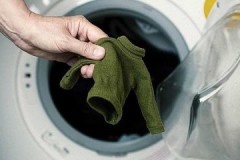Secrets and tips on how to wash a woolen sweater so as not to ruin it
 Woolen sweaters don't go out of style. They are comfortable, cozy and warm very well in the cold season. The practicality of wool is undeniable, but caring for such things is not as easy as we would like.
Woolen sweaters don't go out of style. They are comfortable, cozy and warm very well in the cold season. The practicality of wool is undeniable, but caring for such things is not as easy as we would like.
In order for a sweater to retain its appearance, it must not only be worn neatly, but also properly washed and dried.
Read the article on how to properly wash a woolen sweater and not ruin it.
Content
The whims of wool products
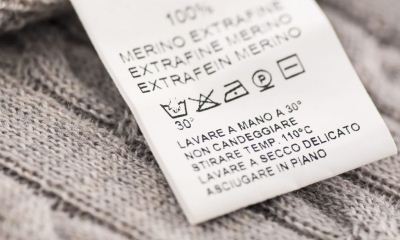 When your favorite warm woolen sweater requires washing, you need to familiarize yourself with the care rules given by the manufacturer himself. They are indicated on the label to the product, which is attached from the inside.
When your favorite warm woolen sweater requires washing, you need to familiarize yourself with the care rules given by the manufacturer himself. They are indicated on the label to the product, which is attached from the inside.
When washing woolen clothes, you must adhere to clear processing rules. Otherwise, the item may be damaged.
If the manufacturer has not prescribed prohibitions, then a wool pullover can and should be washed as it gets dirty... For such things, only delicate exposure is permissible.
Most washable sweaters are recommended to be cleaned by hand. This is especially important for products that are knitted by hand and have a loose weave of threads. The rules for washing woolen items also apply to products with a percentage of wool.
Lots of useful information about washing sweaters you can find here.
Detergent selection
In order for a sweater to survive washing without unpleasant consequences, the detergent must be chosen correctly. It should be free of chlorine and alkali., and the package must contain permission to use a detergent for washing clothes made of wool.
In the absence of a special detergent, during hand washing it can be replaced with an ordinary shampoo.
Hand wash instruction
Hand washing is the safest way to wash your sweater.
For washing you will need:
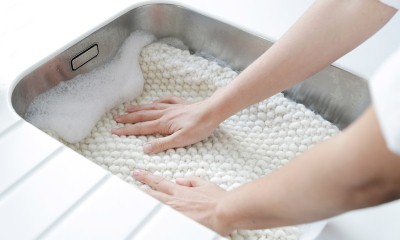 a large container in which the sweater will fit completely;
a large container in which the sweater will fit completely;- a detergent intended for wool;
- a pair of terry towels;
- a lot of water for washing and rinsing;
- fabric softener;
- a horizontal plane on which the item can be laid out for further drying.
Procedure:
- Examine the sweater. If it has defects, for example, stains, holes, then they must be eliminated before washing.
- The product is turned inside out on the wrong side.
- Water is poured into the prepared container at a temperature of + 30 ° C. For blended yarns, and if the manufacturer allows this, the temperature may be higher.
- Dissolve the detergent in water according to the instructions on the package.
- Lower the sweater into a container so that it is completely submerged in water.
- The washing process should take place without intense friction - by squeezing and moving the thing.
- The collar and cuffs are carefully handled separately.
- The soapy water is drained, and the thing itself is wrung out.
- Rinse the sweater several times in clean water.
- Dissolve the fabric softener in the last rinse.
- Take out the sweater and gently wring it out. To do this, it is convenient to wrap the item in a terry towel. The product cannot be twisted.
- In the prepared place, spread the second terry towel and lay out the washed jumper.
How is it correct in a washing machine?
Washing woolen clothes in an automatic washing machine is permitted on rare occasions. This is usually permissible for items made of mixed materials, in which wool is present along with synthetics.
But even with the admission of such processing, you should act carefully:
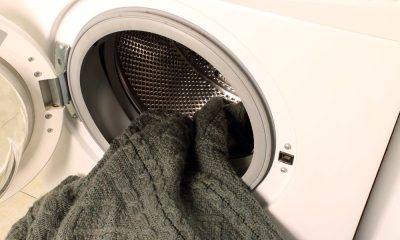 Prepare the sweater as you would for hand washing.
Prepare the sweater as you would for hand washing.- Place the product in a special mesh bag. If it is not there - in a non-fading pillowcase, the hole of which must be buttoned or tied.
- Place the bag in the drum.
- Pour the detergent into the machine's container.
- Select one of the modes on the panel: "wool", "delicate".
- Make sure that the temperature is set at + 30 ° C.
- Set the spin to a minimum, or better, turn it off completely.
- Disable drying.
- Start the machine.
- After the end of the cycle, the sweater must be immediately taken out, wrung out, as with hand washing, wrung out and placed horizontally to dry.
What is it possible and what is not?
If you plan to wash warm woolen items by hand, then each of them must be processed separately.
 When washing in a machine, it is possible to load several things into the drum at once, if they meet the following conditions:
When washing in a machine, it is possible to load several things into the drum at once, if they meet the following conditions:
- do not fade;
- have a similar color and composition;
- all together give a drum filling no more than 2/3.
Each garment should be placed in a separate mesh bag prior to washing.
Jeans and other rough fabrics should not be washed along with pullovers... When the washing machine is running, they will create additional unnecessary friction, which can lead to pilling, and will stimulate rapid deterioration of the fabric.
How to prevent the item from shrinking?
Natural wool has a delicate texture and reacts quickly to mistakes made during washing. High temperatures will in almost all cases lead to shrinkage.
If the goal is to slightly reduce the size of the pullover stretched during the process of wearing, then this can be done during washing... Contrary to the manufacturer's recommendations, the water is heated to + 50 ° C.
The temperature is not raised higher. The sweater is dipped, kept for 5 minutes, and removed from the water. After wringing, the item is dried flat.
Exposing a product to a high temperature, one cannot be 100% sure that the thing will sit just as much as needed... The experiment is likely to fail.
If the sweater still sat down, read here on how to restore the product. If the thing is stretched out, you here.
How to dry?
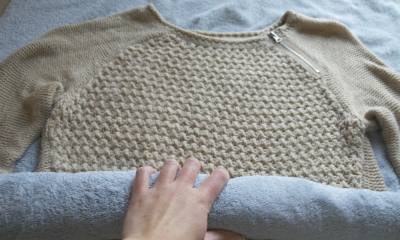 The plasticity and pliability of the wool increases when wet.Wet woolen yarn can deform, which immediately affects the appearance of the sweater.
The plasticity and pliability of the wool increases when wet.Wet woolen yarn can deform, which immediately affects the appearance of the sweater.
Careful drying carried out in natural conditions will help to avoid problems.
The newly washed product is squeezed out of excess water by wrapping it in a terry towel... It is absolutely impossible to twist the thing.
After the item has been wrung out, it must be carefully laid out on a horizontal surface by spreading a terry towel or flannel folded in several layers.
A useful acquisition will be a special folding dryer, which is a mesh well stretched over the frame... Such a device will provide good ventilation both from the bottom and from the top, allowing you to dry things faster and better.
For this:
- A diaper or gauze is placed on top of the not dried product.
- The sweater is rolled up.
- Take it away.
- The towel is replaced with a new one.
- Roll out the sweater again, turning the other side up. In this case, any distortions should be avoided, which may remain forever after the thing has dried.
- The gauze is removed.
If it is necessary to achieve the effect of slight shrinkage, the thing is slightly smoothed.
Avoid exposure to direct sunlight during drying, and also do not try to speed up the process using open fire and heating devices.
In addition, it is forbidden to dry a wet sweater on a trempel or by throwing it over a rope. Such rash actions can lead to product stretching, loss of shape and attractiveness.
Iron or not?
Not every wool sweater can be ironed. Information about this must be indicated on the label.
 What woolen things do not iron under any circumstances:
What woolen things do not iron under any circumstances:
- with embossed volumetric patterns (braids, bumps, etc.);
- from mohair;
- from angora;
- some design models;
- having leather inserts, etc.
To smooth a wrinkled garment with a smooth, uniform knit:
- The iron is set to a non-hot temperature (up to + 150 ° C).
- The item is laid out on the ironing board.
- Moistened gauze is applied to the sweater.
- The movements of the iron should be light, without pressure.
- You should not keep his sole in one place.
- It is necessary to act quickly and accurately.
- Spread the sweater on a horizontal surface until completely dry after ironing.
If the item has slightly sat down, then at the stage of ironing it can be stretched a little.
After that, things are given time to dry and cool, and only after that the sweater can be worn.
6 tips to help
Expert advice will help make the care of a wool product easy and effective:
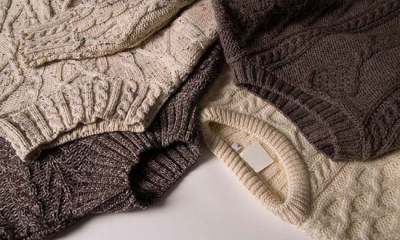 Wool "does not like" too high and too low temperatures.
Wool "does not like" too high and too low temperatures.- Prolonged soaking should not be used.
- Simply turning the sweater inside out before washing will help prevent pilling and keep the garment looking longer.
- The shorter the contact time of the woolen garment with water, the better.
- Do not rub and twist things made of woolen yarn.
- If the woolen garment has decorative or functional buttonholes, they must be sewn in first. To avoid deformation as a result of swelling of the thread used for processing holes. After drying, they are dissolved.
The label is sewn to the product so that it can be studied.
Related Videos
How to wash a woolen sweater in a washing machine, how to dry it after washing, the video will tell you:
Conclusion
Compliance with the rules of caring for woolen sweaters allows you to preserve the appearance and quality of things for a long time, saving money on purchasing new ones.Warm clothing will last a long time if you treat it with care and do not neglect the manufacturer's recommendations.

